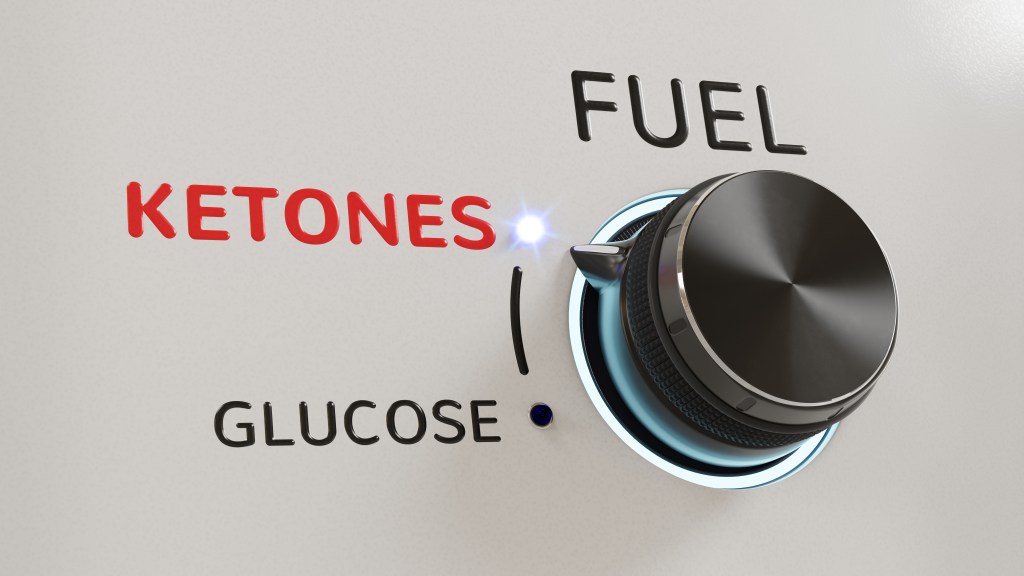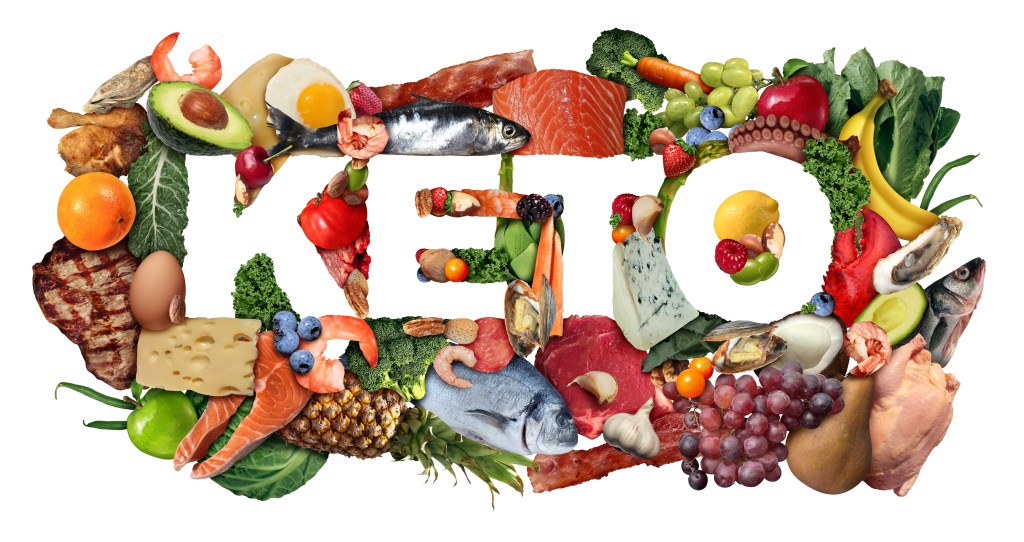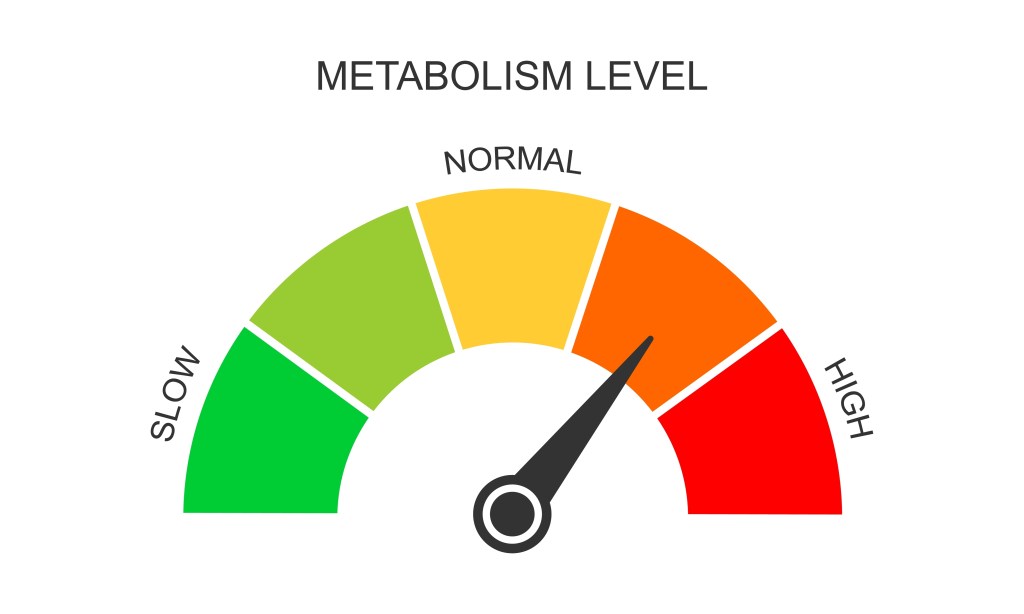At a glance
Achieving full-fat adaptation requires consistent carbohydrate restriction, a nutrient-focused diet, and lifestyle strategies such as intermittent fasting and regular physical activity. Understanding how to support fat adaptation allows you to optimize metabolic flexibility, enhance fat-burning efficiency, and maximize the health benefits of ketosis.
Being fully fat adapted means that your body can easily tap into stored body fat to generate energy, which supports stamina, better weight management, and improved brain functions.
Learn how to shift your body into a fat-adapted state and discover the impressive health benefits of using fat as a primary fuel source.
What does it mean to be fat adapted?
Fat adaptation occurs when the body moves into a metabolic state during which fats replace glucose, also known as blood sugar, as the primary fuel source.
This process involves metabolic and cellular shifts to enable the body to break down and utilize stored fat and dietary fats to fuel all physiological functions.
Fat adaptation requires a metabolic environment that facilitates effective burning of fatty acids, referred to as fat oxidation. This process can be triggered and maintained through targeted dietary and lifestyle habits such as consistent carbohydrate restriction and physical activity.
Fat oxidation occurs in the liver and generates ketone bodies, a highly effective alternative energy source the body uses when glucose is scarce.
When the majority of cellular energy comes from ketone bodies, the body has entered the metabolic state of ketosis, which is linked to various impressive health benefits.
However, while ketosis enables the liver to break down fatty acids, it doesn’t mean the body is fully fat adapted.
Achieving complete fat adaptation involves hormonal and enzymatic shifts and greater metabolic flexibility, allowing cells, tissues, and organs to depend on fat as their steady source of energy.
Watch the video below to learn how to really become fat adapted.
Benefits of fat adaptation
Being fully fat adapted has many metabolic and hormonal benefits, including weight loss, improved blood sugar control, better cognitive functions, and overall enhanced health and well-being.
Although the body prioritizes using blood sugar as an energy source if available, glucose doesn’t offer a constant fuel supply, leading to energy crashes and metabolic stress.
“Fluctuating blood sugar and insulin levels, typically linked to a high-carb diet, are a major driver of weight gain as insulin inhibits the liver from burning fat,” explains Dr. Berg. “Following a low-carb diet instead makes it easier to achieve fat loss, promotes steady energy levels, and decreases food cravings.”
Utilizing fat instead of glucose also helps preserve and restore insulin sensitivity, a marker of metabolic health that supports balanced energy levels and efficient nutrient utilization, and reduces the risk of metabolic disorders such as obesity, diabetes, and high blood pressure.

Because ketones are a preferred fuel source for muscle, brain, and heart tissue, supporting the body’s ability to utilize fats promotes weight loss while preserving muscle mass and ensuring optimal function of vital organs.
A dietary strategy supporting fat burning is significantly more effective for shedding body fat without losing muscle. In contrast, a very low-calorie diet often leads to muscle loss, a slower metabolism, and rebound weight gain.
Furthermore, the profound metabolic changes linked to carbohydrate restriction are linked to various other health benefits, as outlined in research published in Nutrients.
The study summarizes that a metabolic state of fat burning is associated with:
- Cardiovascular health
- Improved cognitive functions
- Balanced gut microbiome
- Cholesterol balance
- Enhanced blood sugar control
- Strong immune function
- Cellular longevity
- Hormonal balance
In addition, fat adaptation can offer unique advantages for active individuals and endurance athletes.
When the body can utilize stored fat for energy, endurance training becomes more efficient due to reduced dependence on carbohydrates, helping maintain steady performance over long periods.
This enhanced metabolic flexibility can help delay exercise-related fatigue, significantly improve stamina, and support faster recovery between workouts.

How to become fat adapted
To become fat adapted first requires triggering and maintaining ketosis by following a ketogenic diet, restricting carbohydrate intake to around 20 to 50 grams daily.
Low-carb diets help keep blood sugar and insulin levels low. This encourages the body to shift out of fat storage mode and start generating ketone bodies, which provide a steady fuel source while the body adapts to burning fat efficiently.
To start burning fat, most people follow a general macronutrient breakdown of approximately 75 percent fat, 20 percent protein, and 5 percent carbohydrates.
Limiting carb intake carefully while prioritizing healthy fats helps train the body to rely on fatty acids instead of glucose for energy.
Over time, the combination of low-carb eating and increased dietary fat intake allows fat oxidation to become the primary energy pathway, promoting metabolic flexibility and fat-adaptation.
Consistency is key, as adapting to fat as a fuel source requires the body to adjust enzymatic pathways, hormonal responses, and cellular fuel utilization to support sustained fat oxidation.
Ketosis can be triggered within just a few days of following a low-carb diet. However, achieving fat adaptation can take several weeks, and most individuals reach full metabolic adjustment after around four weeks of consistent low-carb eating.

How to tell if you’re fat adapted
Being in a fat-adapted mode means your body burns fat consistently, and many people notice significantly improved overall well-being once their metabolism has fully adjusted to using fat as a primary fuel source.
These are signs that your body is fat adapted:
- Less hunger throughout the day
- Ability to go longer between meals without energy crashes
- Rapid fat mass loss
- Steady energy levels
- Reduced carb cravings
- Improved mental clarity and focus
- Better mood regulation and stress resilience
- Deeper and more restorative sleep
- Enhanced exercise performance
- Faster physical recovery
Another sign that your body is fat adapted is diminished keto-flu symptoms, such as headaches, fatigue, and irritability.
The keto flu is a common side effect of starting a high-fat keto diet, caused by the body’s adjustment to low-carbohydrate intake and a shift toward fat burning.
The absence or significant reduction of these symptoms indicates that the body has successfully transitioned to relying on fat, reflecting metabolic adaptation and improved fatty acid oxidation.

Tips to speed up fat adaptation
Although fat adaptation does take time, there are several strategies you can use to optimize fat burning, support the cellular utilization of fatty acids, and enhance metabolic flexibility.
Here are four tips to speed up fat adaptation.
1. Follow Healthy Keto®
While a keto diet that restricts carbs is vital to enter fat-burning mode, it’s equally important to get the essential nutrients your body needs to function optimally.
A Healthy Keto diet plan is an ideal meal plan for speeding up fat adaptation. It emphasizes nutrient-dense whole foods that provide vitamins, minerals, and antioxidants essential for optimal metabolic health and efficient energy production.
In addition to prioritizing organic produce and high-quality protein sources, this advanced version of the keto diet incorporates healthy fats such as olive oil and coconut oil, as well as nutritious animal fat sources like ghee, beef tallow, and grass-fed butter.
However, it’s vital to avoid excessive fat intake, even when following a high-fat diet. The body prioritizes metabolizing dietary fat over stored body fat, and consuming too many calories from fat can slow fat loss and fat adaptation.

2. Practice intermittent fasting
Combining carb restriction with intermittent fasting is an excellent strategy to deepen ketosis and encourage fat adaptation.
Intermittent fasting is a structured meal schedule that alternates between designated eating windows and periods of caloric restriction, during which the body has to burn more fat to generate energy.
This time-restricted mealtime approach also supports metabolic switching, which refers to the body’s ability to efficiently transition to utilizing ketones and fatty acids as fuel sources.
This has been confirmed by evidence published in Nutrients, highlighting, “Metabolic switching through intermittent fasting results in improved metabolism, increased health span, and increased longevity through multiple processes.”
Occasional prolonged fasts can further enhance fat adaptation as the body is forced to tap into stored body fat during extended periods of caloric restriction.
3. Prioritize physical activity
Regular physical activity, especially high-intensity interval training (HIIT), helps the body convert stored fat into energy more efficiently.
Exercise also forces muscle tissue to use fat and ketones as fuel, which supports and enhances cellular fat adaptation.
Adding resistance training to your workout routine helps you lose body mass while preserving muscle. This promotes a healthy body composition and can enhance your basal metabolic rate (BMR), meaning you burn more fat even when at rest.

4. Stay hydrated and replenish electrolytes
The metabolic adjustments associated with fat burning can trigger increased fluid and electrolyte loss. This can increase the risk of dehydration and electrolyte imbalances, which can affect critical cellular functions, including fat oxidation.
Therefore, it’s vital to stay hydrated and replenish essential electrolytes such as potassium, magnesium, sodium, and chloride by following a nutrient-dense low-carb diet.
This has been confirmed by evidence published in Frontiers in Nutrition, stating that dietary electrolyte intake, especially potassium and magnesium, is associated with a lower body weight.
Magnesium and potassium regulate muscle and nerve function while supporting energy production and metabolic flexibility, highlighting their vital role in becoming fat adapted.
Key takeaways
- Being fat-adapted means the body can consistently burn stored fat and utilize ketones, providing steady energy and supporting optimal brain, heart, and muscle function.
- Supporting fat adaptation allows the body to maximize fat-burning potential, improve insulin sensitivity, and promote overall metabolic and hormonal health.
- Following a nutrient-rich Healthy Keto diet, practicing intermittent fasting, and staying physically active accelerates fat adaptation and enhances metabolic flexibility.
- Signs of successful fat adaptation include reduced hunger and carb cravings, steady energy, improved exercise performance, faster recovery, and better mental clarity.
FAQ
1. How do you know if you are fat adapted?
Signs that your body is fat adapted include being able to easily burn fat and going longer between meals without hunger, diminished food cravings, steady energy levels, and better mental clarity.
In addition, many individuals notice better mood regulation, improved hormonal balance, stronger immune defenses, and lower inflammation.
2. How long does it take to become fat adapted?
How long it takes to become fat adapted depends on your metabolic flexibility, overall carbohydrate intake, and health status. While most people can enter a fat-burning state within a few days of following a low-carb diet, it can take four to six weeks to become fully fat adapted.
3. Do you lose weight faster when fat adapted?
Yes, fat adaptation supports rapid weight loss as the body becomes more efficient at utilizing stored body fat for energy, especially during periods of fasting and physical activity.
4. Is it healthy to be fat adapted?
Fat adaptation has several profound benefits, as it improves metabolic health, supports cellular functions, helps lower inflammation, and provides a stable energy supply for the heart, brain, and muscles.
It also supports insulin sensitivity, helping reduce the risk of insulin resistance and related metabolic disorders such as diabetes, high blood pressure, obesity, and heart disease.
5. What’s the difference between ketosis and fat adaptation?
Ketosis is a metabolic state triggered by carb restriction, during which the liver produces ketone bodies by breaking down dietary and body fat to replace glucose as a primary fuel source.
Fat adaptation refers to a more advanced state that occurs after several weeks of consistent ketosis, when the body becomes fully efficient at using fatty acids and ketones for energy.
Sources
- https://www.mdpi.com/2072-6643/13/5/1654
- https://pmc.ncbi.nlm.nih.gov/articles/PMC8839325/
- https://pubmed.ncbi.nlm.nih.gov/37139459/


















